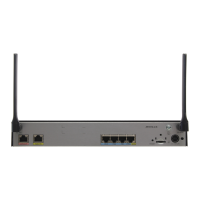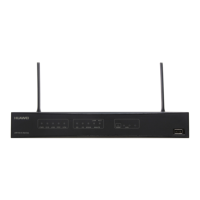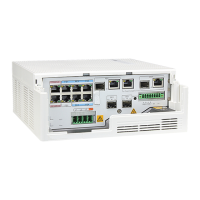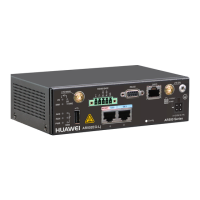VPN routing information. That is, MP IBGP peers must establish full connections between each
other. Suppose there are n PEs (including ASBRs) in an AS, n (n-1)/2 MP IBGP connections
need to be established. A large number of IBGP peers consume a great amount of network
resources.
The Route Reflector (RR) can solve this problem. In an AS, one router can be configured as the
RR to reflect VPNv4 routes and the other PEs and ASBRs serve as the clients, which are called
Client PEs. An RR can be a P, PE, ASBR, or a router of other types.
The introduction of the RR reduces the number of MP IBGP connections. This lightens the
burden on PEs and facilitates network maintenance and management.
Pre-configuration Tasks
Before configuring route reflection to optimize the VPN backbone layer, complete the following
tasks:
l Configuring the routing protocol for the MPLS backbone network to implement IP
interworking between routers in the backbone network
l Establishing tunnels (LSPs or GRE tunnels) between the RR and all Client PEs
Data Preparation
To configure the BGP VPNv4 route reflection, you need the following data.
No.
Data
1 Local AS number and peer AS number
2 Type and number of the interfaces used to set up the TCP connection
3 BGP peer group name and IP addresses of peers
3.15.2 Configuring the Client PEs to Establish MP IBGP
Connections with the RR
An MP-IBGP connection is configured between the PE and the RR to facilitate VPNv4 route
reflection.
Context
Perform the following steps on all Client PEs.
Procedure
Step 1 Run:
system-view
The system view is displayed.
Step 2 Run:
bgp as-number
Huawei AR1200 Series Enterprise Routers
Configuration Guide - VPN 3 BGP MPLS IP VPN Configuration
Issue 01 (2012-04-20) Huawei Proprietary and Confidential
Copyright © Huawei Technologies Co., Ltd.
136
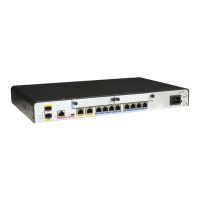
